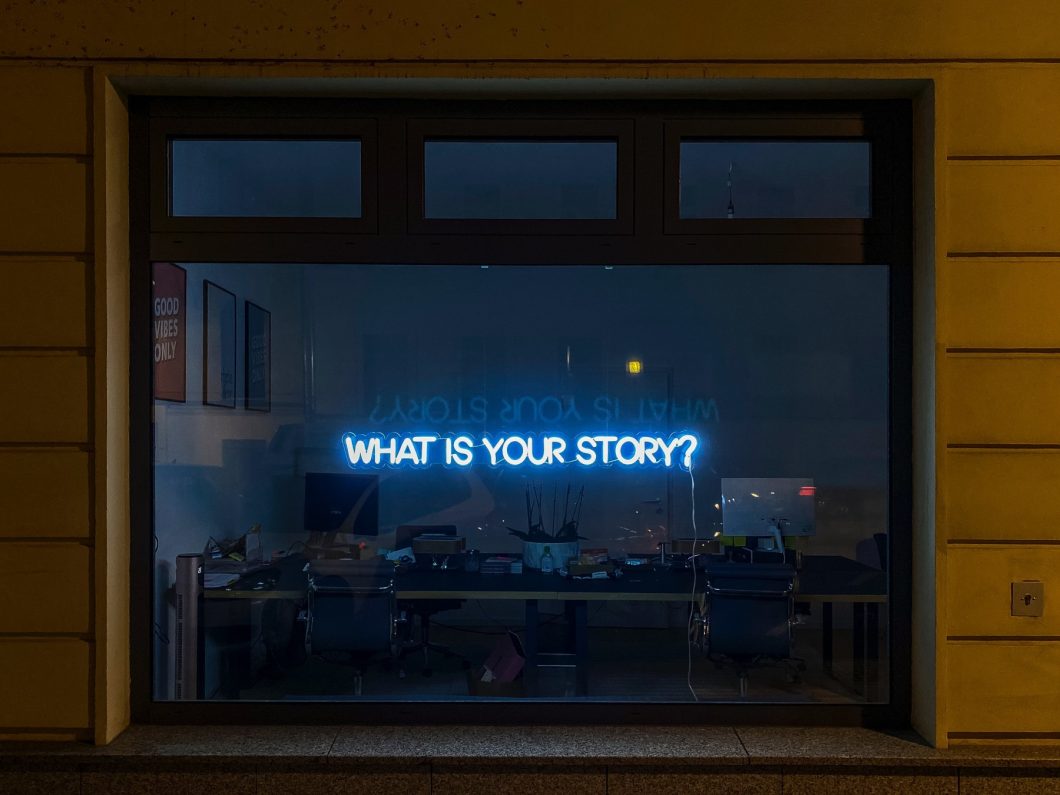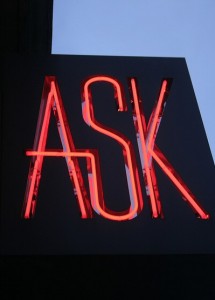
First Things First: TON is One!
A year ago today, The Open Notebook published our first stories, launching an ongoing series of “story behind the story” interviews with some of the science journalists whose work we admire. Our idea then, as now, was that despite the changing marketplace for science journalism, craftsmanship still matters. With that in mind, we wanted to explore the nuts and bolts of what makes for outstanding craftsmanship—and share what we learned with our peers. We’ve been amazed by the generosity of the many science writers who have shared their experiences, insights, successes, doubts, pitches, notes, drafts, and—not least—their time. In the last several months, thanks to a generous grant from the National Association of Science Writers, we have been able to expand the scope of the site to include a broader range of articles and other resources, such as the Pitch Database we published last week. We also have been thrilled to be able to commission some fantastic guest contributors, whose work has greatly enriched the site. Thank you, all! (Thank you also to the readers who have contributed to our new tip jar! Your contributions help make it possible for us to keep this project going.)
How We’re Celebrating

We’re celebrating our birthday with a gift to our readers: Today and for the rest of the week, we’re introducing a new feature at The Open Notebook, called “Ask TON.” A few weeks ago, we invited science writers to send us the craft-related questions they’ve been dying to get answered—but perhaps felt too shy to ask. (Shy journalists? Yes, it’s possible.) Our plan is to periodically choose a question and pose it (keeping the questioner’s identity private) to science writers whose judgment we trust. Once we’re satisfied we’ve found some good answers, we’ll post both the question and the answers at The Open Notebook. This week, we’ll post a bunch of Ask TON features … one a day, if the universe is on our side. After that, we’ll slow down the pace a bit … but please keep your questions coming!
To start things off, here’s a question we posed to a handful of terrific writers and editors: What are the main things I should know about how to write a good pitch letter?
Men’s Journal senior editor Tyghe Trimble:
- If you don’t have a relationship with the editor, don’t pitch a 6,000 word feature. Period.
- You don’t have to do all your reporting before pitching, but you must mention who your sources will be.
- Don’t pitch the news. Pitch a story that needs to be told, complete with laser focus and brilliant angle. Then put the news peg up top, the icing on the cake.
- Read two recent issues of the magazine, front-to-back. Lose your preconceptions. A brand is not static. If you know Popular Science from ’60s, the Men’s Journal of the ’90s, or National Geographic from the ’80s, you don’t know the magazine. Your pitches will reflect a stereotype—and we’ll discount you entirely.
Freelance science writer and Science News contributing editor Alexandra Witze:
- Be timely; be thorough; make clear why this particular story is a good fit for this publication at this time. And spell everything correctly, including the publication and the name of the editor you’re pitching.
Science magazine online news editor David Grimm:
- Pick the right outlet. Don’t pitch a technology story to a publication that only covers health, or a hard-core molecular biology story to a general interest magazine.
- Do your homework. Figure out what types of stories the outlets want. If in doubt, e-mail the editor and ask him/her what topics they’re interested in.
- Always write “Pitch” or “Query” in the e-mail subject line. Otherwise, it could end up confused for a press release—and ignored.
- Pitch in advance of embargo lift/public release if possible. No outlet wants to be late on a story.
- Never call. Always e-mail.
- The pitch letter itself should answer the following questions: What’s the story? Why should we want it? Why you? Why now? I usually advise summarizing the story in a graf or two; telling the editor why it would make a good story for that particular outlet; talking briefly about your qualifications (your writing experience, your experience covering that particular field, etc.); and mentioning the embargo date/public release date. I also suggest including a sample lede, talking about multimedia (if appropriate), and—if you really want to go the extra mile—talking to an outside expert to get his/her take on the study.
- As a daily news site, we [ScienceNOW] want fresh news, so that means ideally stories released that day, and at the very least stories released that month (assuming no other coverage). Remember, you’re trying to give an outlet fresh, exclusive stories.
Finally, journalist and author Maryn McKenna has recently prepared notes for a short course on pitching (part of a magazine journalism course at the University of Georgia). She sent us her “not-comprehensive” notes (view them as a PDF here):
A good pitch requires a fleshed-out idea
- It is not enough to have a topic. A topic is not a story. Topic + news, or + characters and narrative arc, make a story.
- A pitch should be newsy but not time-sensitive.
- For most magazines, the minimum production timeline, if pitch is accepted immediately, is:
- 1-2 mos reporting/writing
- 1-2 mos editing/production
- So you can see that something that is news today will be old when a magazine comes out—and therefore will not be a successful pitch.
- For most magazines, the minimum production timeline, if pitch is accepted immediately, is:
For a successful pitch, you must do research
- Expect to spend at least 10 solid hours on this. (Yes, this is unpaid work.)
- Lexis-Nexis or Factiva
- PubMed
- Interviews
- If the pitch is successful, these will become your first round of story research. Therefore, you must take good notes and keep your research organized. If you sell the story, you will be required to prove where every quote and fact came from, so start being organized now.
For a successful pitch, you must also research your target publication
- Identifying the right editor is the LAST task.
- The first task is ensuring that your idea matches, or can be tuned to, the magazine’s target demographic
- E.g., women’s magazines
- Self, women 18-35
- Health, women 20-45; aspirational
- More, 40-60; upper income, professional
- Good Housekeeping, LHJ; 30-50, more likely to be moms with kids
- Your idea and your characters/quoted sources must match the target demo.
- E.g., women’s magazines
- Therefore, you must research the magazine
- Go to a library and analyze the paper magazine
- Magazines that exist on paper and the web are still making decisions on the basis of how the paper magazine is organized (front of book, middle/back of book). Websites, even iPad apps, to this point do not allow you to assess the decisions that the magazine has made about placement and relative value of a story
Expect to have several rounds of communication with an editor
- Initial introductory email
- Pre-pitch email, one-graf description
- If they agree to look at more, then:
- First-draft pitch email
- Discussion by email or phone
- Second-draft pitch email
- Usually requires additional research
Successful pitches accomplish several things at once
- Demonstrate you understand the magazine
- Display your comprehensive idea
- Show that you have done some research
- Showcase your compelling writing
- Give the editor ammunition for pitch meetings (more on that below)
- Do not provide any reasons for hitting the delete key
- Bad idea, poor demographic choice, talkiness, bad spelling
Most pitches have a fairly rigid form. This is not the time to get creative.
- Short version: Why this, why now, why you
- Long version: The basic components are:
- Topic background
- Story proposal (literally: “I propose a story about…”)
- Whom you will speak to (and have already)
- In some magazines, which academic research you will review, with titles and links
- Whether this has been covered before and where
- How long a story you envision
- Why you should write it and who you are
- There are variations:
- Some magazines request 1-page only
- Some ask for long pitches. It is possible for the initial pitch to be longer than the final assignment (1000-word pitch v. 750-word story.)
- Some look for anecdotal-lede pitches, but if you use an anecdotal lede, it must be short
At most major magazines, an assigning editor does not make the pitch decision alone
- Your pitch may be reviewed by:
- Executive editor and editor-in-chief
- Editorial board of editors competing for space
- Monthly pitch meeting of editors with veto by EIC
- Therefore, your pitch (and phone conversations) must give the editor you are talking to enough information to allow him/her to defend choosing your story
Rejection is common
- Do not take it personally. Be pleasant and positive
- If they like their interaction with you, they are more likely to think of you for an idea of theirs
- Do NOT say “another magazine is interested”
- Do not simultaneous-pitch. (Writers disagree about this but editors universally hate it.)
- Do be prepared to follow up
- Re-send 1x
- Augment email or seek phone convo 1x
- Then be prepared to re-pitch elsewhere
- Pro tip: Assume you will be rejected. Redraft your pitch as soon as you send it. Then it will be ready to send again as soon as it is rejected.
Sources of help
- Publications, e.g. Writers’ Market
- Online publications, e.g.: MediaBistro’s “How to Pitch” series
- Databases maintained by professional organizations
- Association of Health Care Journalists
- National Association of Science Writers
- American Society of Journalists and Authors
- Pro bono and academic sites
- The Open Notebook Pitch Database: opennotebook-2022.mystagingwebsite.com/pitch-database
- Stanford University’s Future of Freelancing: freelance.stanford.edu/pitch


